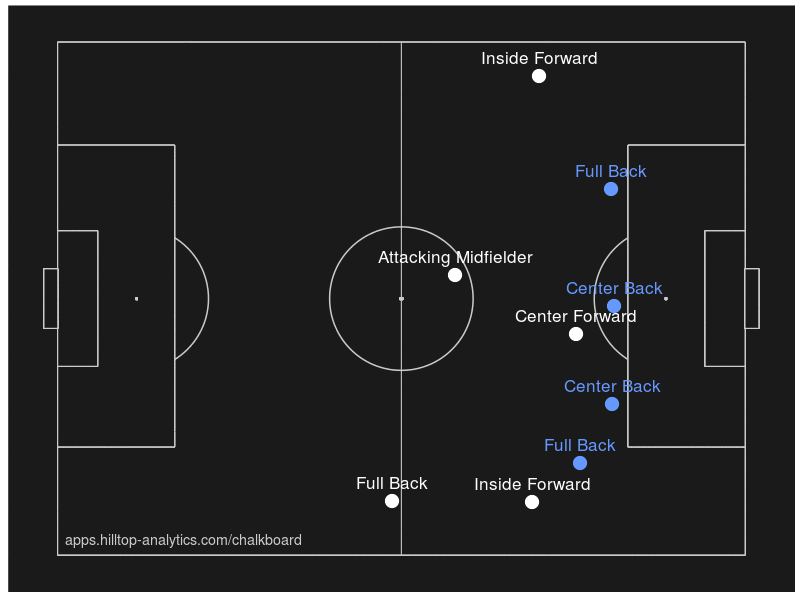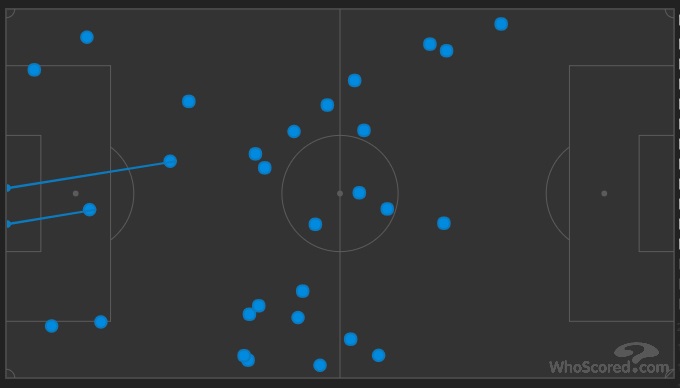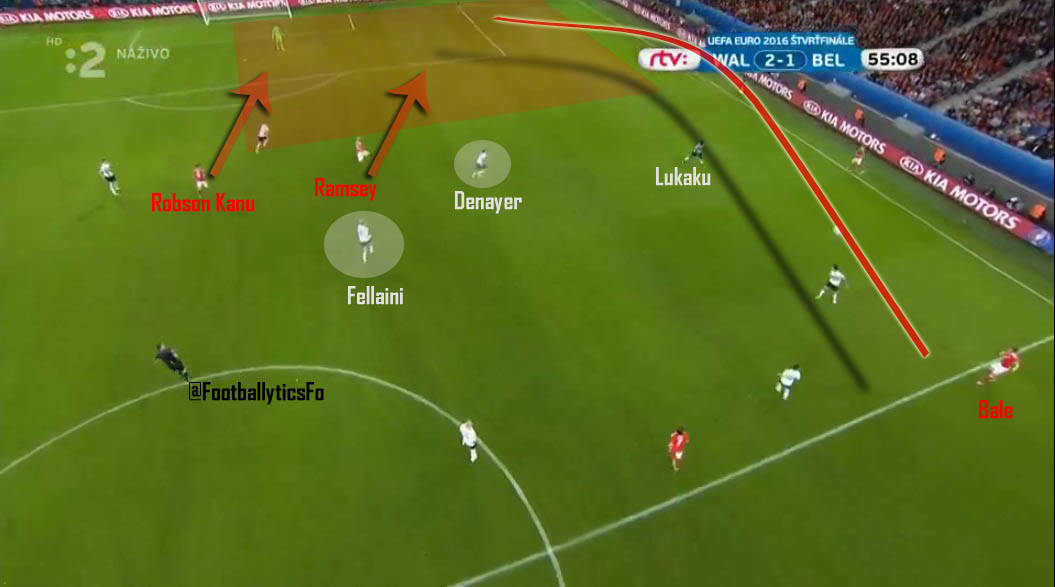In last two years El Clasico was very kind to us. With four goals on average it was a match that kept us all on the verge of our seats. However, the game played at Camp Nou on Saturday seemed to have two different teams disguised as top Spanish sides.
Yet, if we consider the circumstances, it is quite understandable why we have seen two timid teams that were more interested in outsmarting than outscoring each other.
Real Madrid came into the derby match without an away loss since December 2015 and in impressive form that saw them win five matches in row. Barcelona, on the other hand, was already behind great rival by six points. Worse than their points summary were the performances they have put together recently. Three draws in last five games and very unconvincing ones.
Therefore, Luis Enrique had to be cautious going into the match that could see him nine points behind the top team of the league. The form and difference in points meant that Zinedine Zidane could afford himself the luxury of repeating the strategy from recent derby match against Atletico Madrid.

Real sat deep and reluctant to press Barcelona high unless it meant chasing down back passes. They opted to stay deep and wait their chance on counter attacks as we can see on the image above. Lucas Velazquez had an important role of tracking back and helping to deal with Neymar.

However, initially this provided a lot of space for Barcelona. If we look the same image from hosts’ perspective, we see quite a different picture. Due to low pressing intensity Barcelona could come into the middle third with relative ease. Since Cristiano Ronaldo’s defensive work rate isn’t the best, that meant Blau Grana could get a numerical advantage in the centre of the pitch simply by rising one centre back. To deal with it, Isco and Modrić needed to step up which lead to an overload in the central area. Kovačić was left alone to deal with four Barcelona players and lot of space due to Real Madrid relatively deep defensive line.
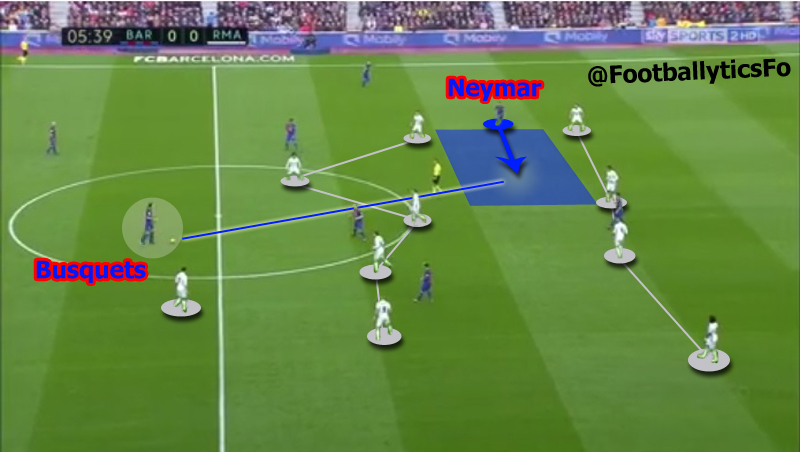
We see another variant of play Barcelona employed to find space in front of the defence. As opposed to the first image, two central midfielders do not engage in press on ball carrier. Therefore, Busquets has enough time and space to find Neymar as he cuts inside.
However, Real adapted quickly by rising the defensive line which eliminated the space in front of the defence and creating a lot of it behind.
This was a calculated risk by Zinedine Zidane as he eliminated dangerous space in central areas hoping his defence will be able to deal with Neymar and Suarez. While this isn’t usually the case, Zidane was proven right in this instance. Partly due to quality of his defence, but largely due to great work of midfield that sealed off the passing lanes through the middle. Even Messi, who was playing quite deep and central to help the ball circulation in middle third, couldn’t do much about it and Barcelona was left relying on rather desperate long balls into the path of two strikers.
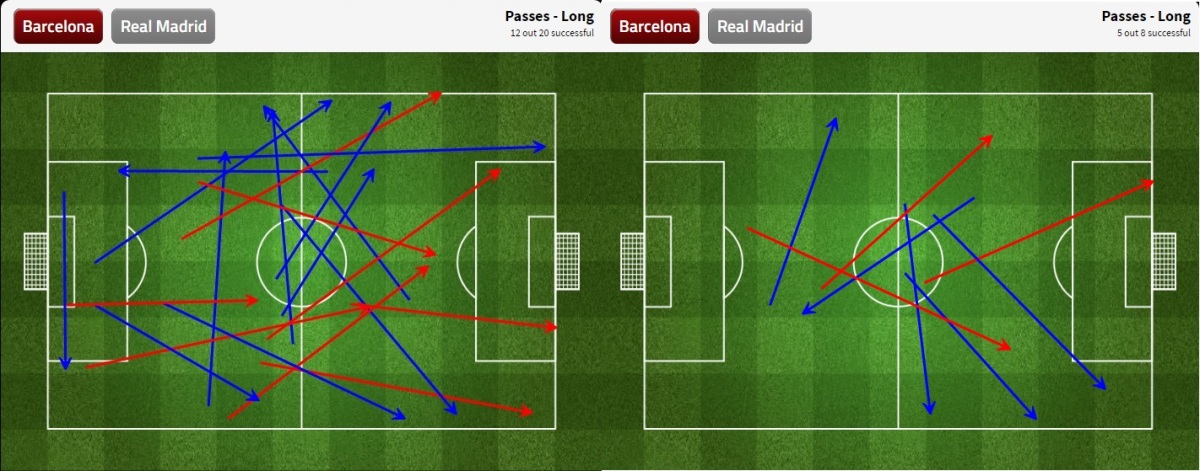
Above we see long ball comparison for Barcelona during the first and the second half. It is obvious how the hosts were frustrated by good defending from Real Madrid. One lucky goal later and with Iniesta on the pitch, Barcelona looked much like the team we all know.
To an extent this was due to their decision to abandon long balls and try to play around the defence. However, Zidane reacted to goal by making his team more attacking and that meant more space for Barcelona.
As Casemiro replaced Isco, the Brazilian midfielder took over all the defensive duties allowing Luka Modrić to go more offensive which made huge holes in Real defence especially during transition from attack to defensive shape. In that period Barcelona should have probably increased the lead but they needed more confidence to finish off their chances.
As the game was nearing the end Zidane introduced Asensio and Mariano reverting to sort of 4-2-4 in hope to get an equalizer which they eventually managed to do.
To conclude, Barcelona will be far less happy with El Classico than their rivals. They were unable to deal with great defensive work of their opposition and couldn’t find their rhythm until Real opened up. They failed to capitalize on their chances and didn’t manage to shut the shop either. A pattern that repeats all over the last month and doesn’t spur confidence in the rest of the season. Real, on the other hand, didn’t really need the victory but has shown great character to get back into the match they controlled most of the time. Well, at least if we consider they came to defend and look to score on the counter. They defended formidably indeed and while they didn’t score on the counter they didn’t compromise strong position they had before the match. If anything, their confidence can only grow with the goal in the last minute of an away game against the biggest rivals.




